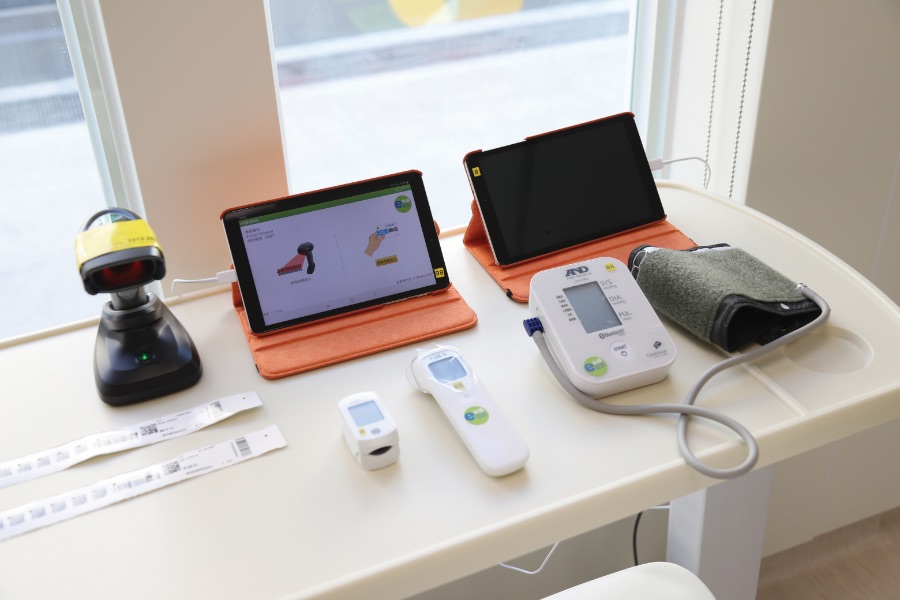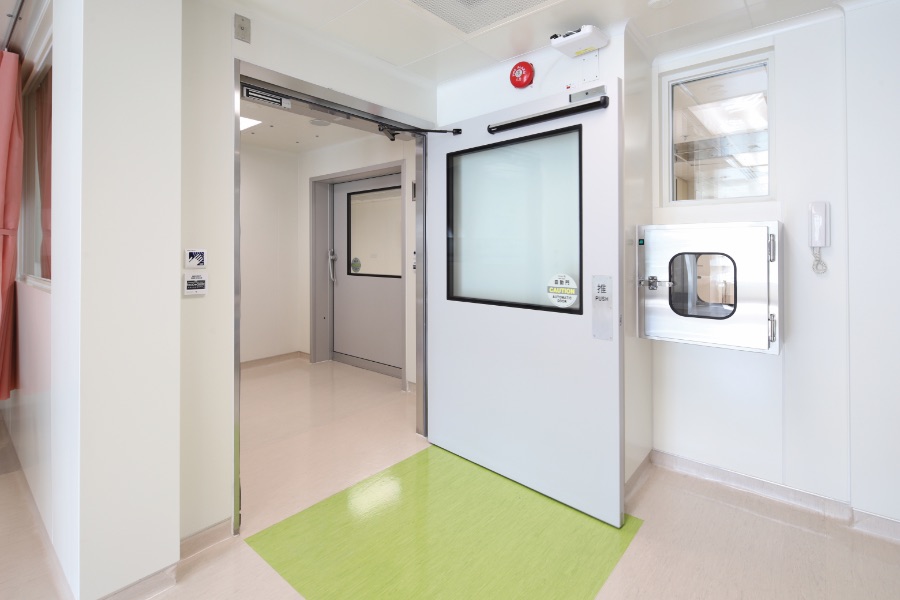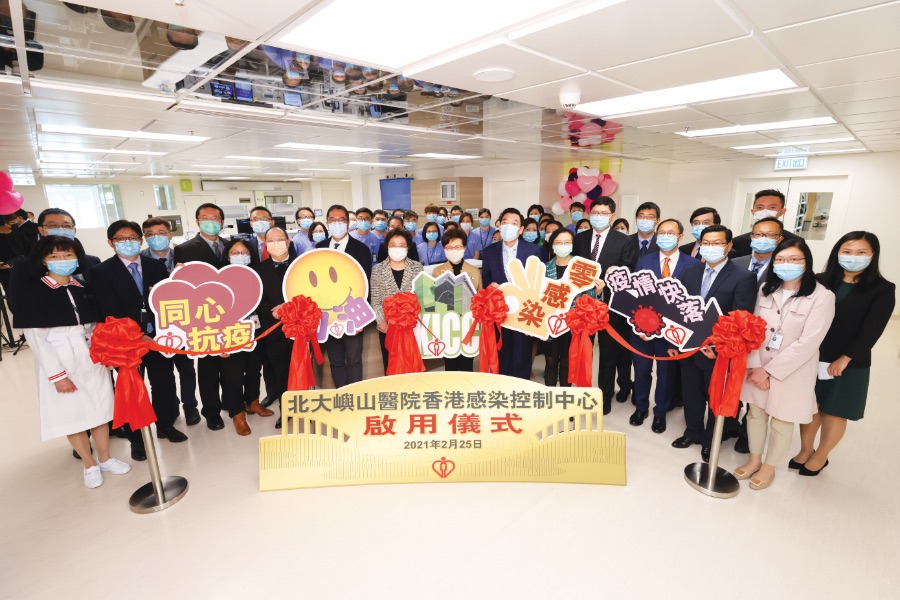From blueprint to scale
Tackling the huge challenges to meet various hospital building laws and regulations, a new hospital facility has finally been completed from scratch in the space of just four months – an extraordinary effort that laid down milestones in Hong Kong’s medical history. With the concerted dedications from the Hospital Authority (HA) Head Office, Kowloon West Cluster and various Government departments, the rise of the North Lantau Hospital Hong Kong Infection Control Centre (HKICC) saw teams work at an incredible rate and a host of novel features, including a doctor-patient separation design and innovative smart hospital facilities.
Careful ward design is critical for an infection diseases hospital, so the design team sprang into action in preparing the ward drawings as soon as the HA was notified of the new hospital project in September last year. Designers then raced against the clock to draw up arrangements for patient flow of admission and treatment. As well as the major issues, design work drilled down to smaller details such as the ward ceilings and even the location of sockets. Detailed design drawings were finalised and approved within just a month.
Senior Manager (Capital Projects) David Chak says the HKICC was the first hospital in Hong Kong built using Modular Integrated Construction technology – a technology suited to large buildings with repeated layout components. The negative pressure wards of the hospital comprise three main prefabricated sections together with over 500 smaller components such as walls, toilets and wash basins, all of which were factory-assembled in advance. The parts were then delivered and put together on site. “One of the difficulties was the construction of lifts,” David explains, “it usually takes nine months from design to getting the lifts installed and operating, but thanks to the concerted efforts of everyone, the lifts were already in operation before the opening of the hospital.”
Careful ward design is critical for an infection diseases hospital, so the design team sprang into action in preparing the ward drawings as soon as the HA was notified of the new hospital project in September last year. Designers then raced against the clock to draw up arrangements for patient flow of admission and treatment. As well as the major issues, design work drilled down to smaller details such as the ward ceilings and even the location of sockets. Detailed design drawings were finalised and approved within just a month.
Senior Manager (Capital Projects) David Chak says the HKICC was the first hospital in Hong Kong built using Modular Integrated Construction technology – a technology suited to large buildings with repeated layout components. The negative pressure wards of the hospital comprise three main prefabricated sections together with over 500 smaller components such as walls, toilets and wash basins, all of which were factory-assembled in advance. The parts were then delivered and put together on site. “One of the difficulties was the construction of lifts,” David explains, “it usually takes nine months from design to getting the lifts installed and operating, but thanks to the concerted efforts of everyone, the lifts were already in operation before the opening of the hospital.”
Doctor-patient separation design
The design of the HKICC also adopts doctor-patient separation and smart technology elements, as well as a number of features aimed at catering to the needs of staff and patients. Dr Chris Tsang, Chief Manager (Planning and Commissioning) of Kowloon West Cluster, cites an example that, an aisle for medical supplies and staff to come in and out of a ward had been designed to be as far away as possible from an outer aisle intended for medical waste. A series of intelligent medical technology elements had also been included for effective patient monitoring and infection control. Features include self-service vitality index machines which allow patients to monitor their own blood pressure, temperature and blood oxygen level, are provided in the isolation cubicles. Data is automatically uploaded to tablets at bedside and outside wall of the ward as well as the central medical staff system at the nurse station in real time, so that patients’ conditions can be closely and constantly monitored for necessary medical follow-up.
A collective effort by the HA teams allowed the preparatory work for the HKICC to be completed in a remarkably short period of time so the hospital could go into operation in mid-February. Deputy Hospital Chief Executive of North Lantau Hospital Dr Michael Wong says, “The procurement process for medical equipment usually takes at least half a year. However, on this occasion, everyone understood that there was no time to lose. Many decisions were made in the space of two weeks and then we immediately seized the opportunity to buy the laboratory equipment, arrange delivery and installation.” He points out that, HA is a learning organisation whose staff have learned over the course of pandemic to work flexibly and staff members were ready to begin work no matter how many patients would be admitted into the new hospital.
A collective effort by the HA teams allowed the preparatory work for the HKICC to be completed in a remarkably short period of time so the hospital could go into operation in mid-February. Deputy Hospital Chief Executive of North Lantau Hospital Dr Michael Wong says, “The procurement process for medical equipment usually takes at least half a year. However, on this occasion, everyone understood that there was no time to lose. Many decisions were made in the space of two weeks and then we immediately seized the opportunity to buy the laboratory equipment, arrange delivery and installation.” He points out that, HA is a learning organisation whose staff have learned over the course of pandemic to work flexibly and staff members were ready to begin work no matter how many patients would be admitted into the new hospital.


